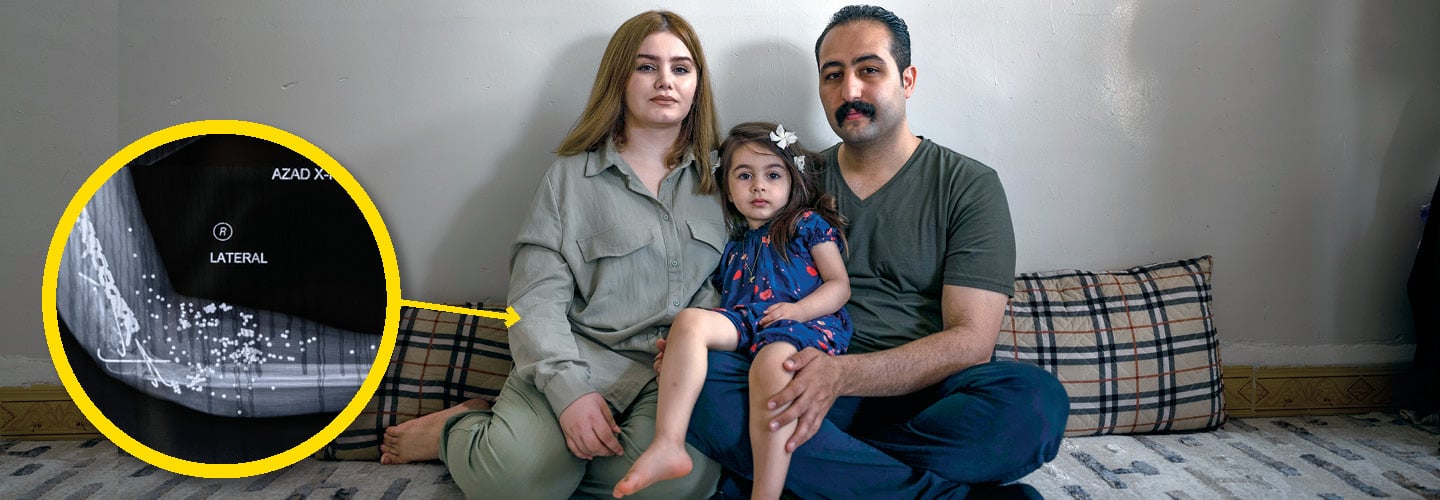One rainy evening last spring, a young Iranian mother with a mangled arm, her husband, and their 3-year-old daughter met a smuggler near Iran’s border with Iraq. He delivered a stern ultimatum: Keep the child quiet or leave her behind.
The mother, Sima Moradbeigi (see-ma mor-ahd-bahg-ee), 26, ran to a pharmacy for a bottle of cough syrup to drug her daughter, Juan, into a stupor.
Under the cover of night, the family followed the smuggler along mountain paths, sometimes crawling through muddy scrubland to avoid Iranian border guards with flashlights. Hours later, Moradbeigi and her husband say, they arrived safely at a mosque outside the city of Sulaimaniya in Iraq’s northern Kurdistan region.
The cough syrup had worked. Juan barely stirred throughout their harrowing journey.
Moradbeigi is part of a group of Iranian mothers who’ve concluded they need to flee Iran to spare their daughters from a lifetime under the authoritarian regime. A number of these women spoke with The New York Times about their escapes to Iraq and other nearby countries. This is Moradbeigi’s story.
One rainy evening last spring, a young Iranian mother with a mangled arm, her husband, and their 3-year-old daughter met a smuggler near Iran’s border with Iraq. He delivered a stern ultimatum. Keep the child quiet or leave her behind.
The mother, Sima Moradbeigi (see-ma mor-ahd-bahg-ee), 26, ran to a pharmacy. She bought a bottle of cough syrup to drug her daughter, Juan, into a stupor.
Under the cover of night, the family followed the smuggler along mountain paths. Sometimes they had to crawl through muddy scrubland to avoid Iranian border guards. Hours later, they arrived safely at a mosque outside the city of Sulaimaniya in Iraq’s northern Kurdistan region.
The cough syrup had worked. Juan barely stirred throughout their harrowing journey.
Moradbeigi is part of a group of Iranian mothers who’ve concluded they need to flee Iran. They want to spare their daughters from a lifetime under the authoritarian regime. A number of these women spoke with The New York Times about their escapes to Iraq and other nearby countries. This is Moradbeigi’s story.

